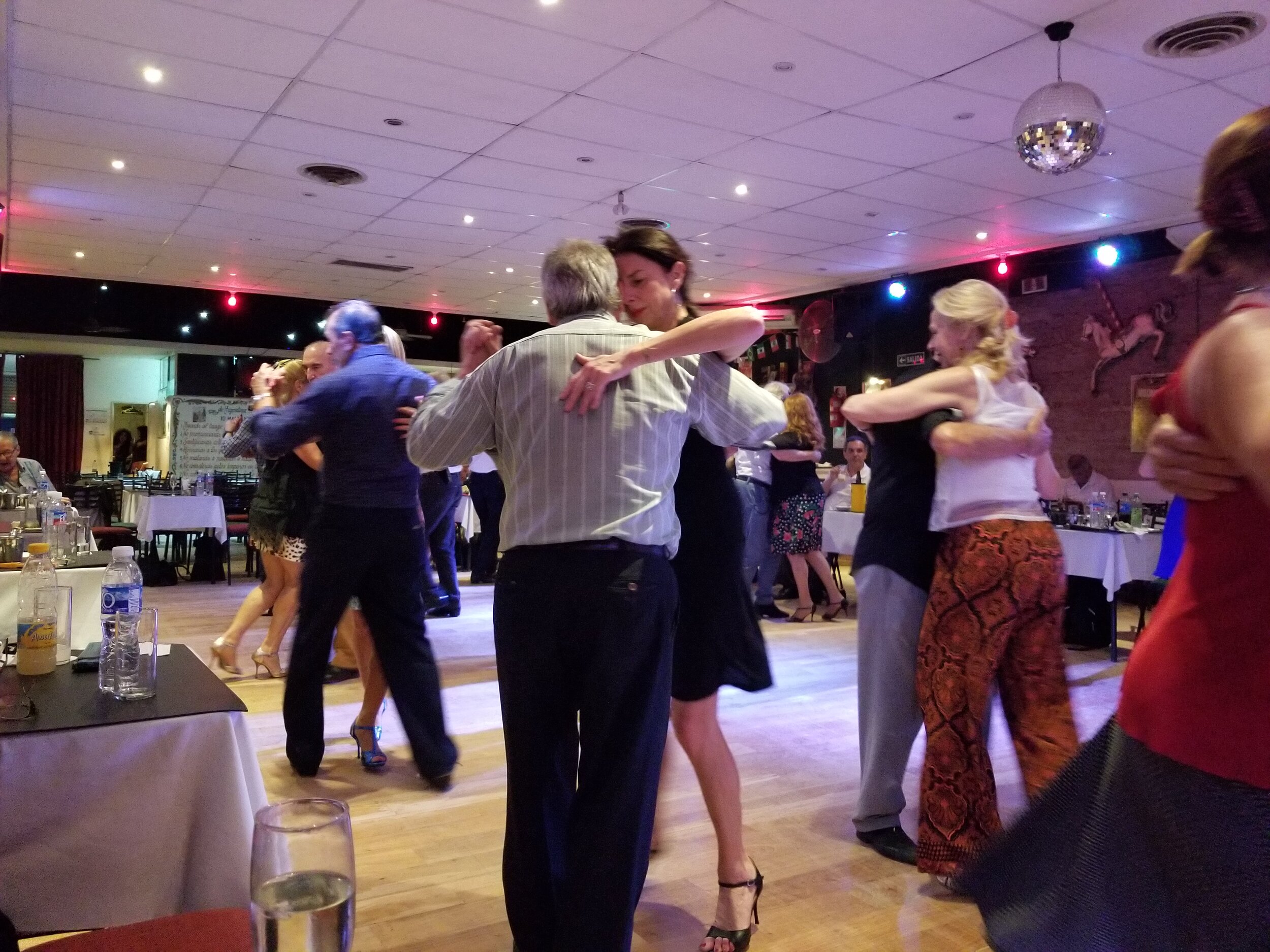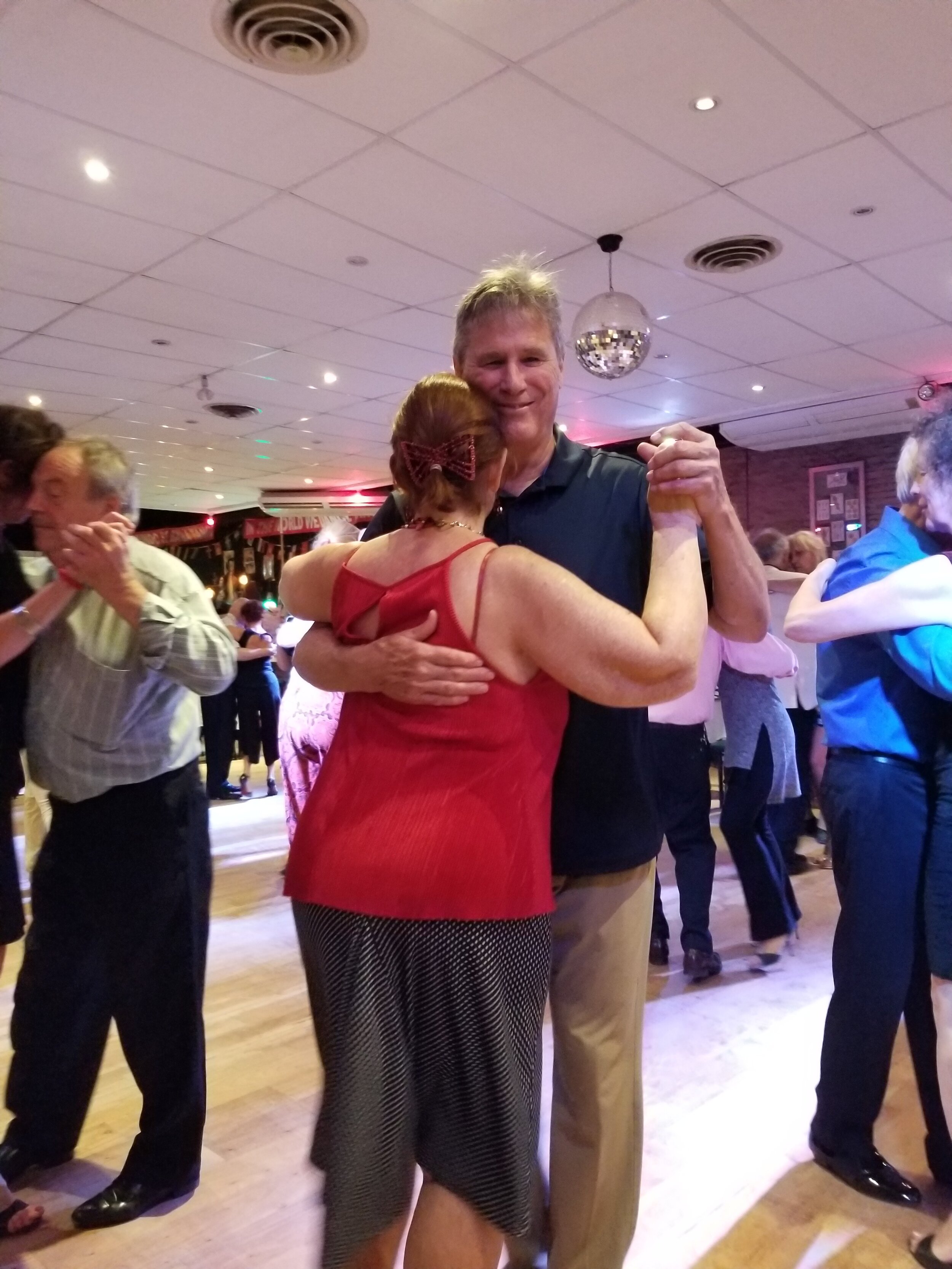The saga
The bad news
About a month ago, I got kicked by an enthusiastic dancer. It hurt a lot, but I carried on teaching. The next day, another student (a doctor) felt my toe and told me she couldn't feel a fracture. I kept on teaching, but mostly danced in socks for the week.
I went dancing a week later, in heels as usual. After about three tandas, I couldn't dance anymore. I figured that, after teaching five hours, I was just tired. However, another week in socks, and another attempt to dance in heels after the second week, ended the same way. I felt a sharp snapping feeling in my toe, and couldn't pivot anymore.
My husband insisted that I go to urgent care, where they xrayed my toe, told me they didn't see a break, and sent me home in a boot with my big toe buddy-wrapped to my second toe.
The next day, the doctor called to say that the radiologist "might" have found a fracture of my toe. Two days later, they confirmed that my toe was broken. My chiropractor, who works with Oregon Ballet Theatre dancers, read me the riot act, and made me promise to cut down on teaching, as well as to wear this (stupid) boot for six weeks.
I am two weeks into the six weeks. I figure that I probably re-broke the toe at least once before wearing the boot, so I am counting the break from the Xray day, rather than from being kicked. I am NOT a good patient. I push my body. I am still teaching about three hours a day, six days a week. Being self-employed means that I don't have workman's compensation for injury on the job, and I don't have sick days or paid vacation; so I work.
The good news
I am getting a lot of help from my students. Some are coming to classes with a partner instead of solo. Some have switched to every other week to rest my foot. Some are helping out with my dance classes. I really appreciate it!
That's the only good part when I'm in a grumpy mood about my (stupid) foot.
I can still lead!
All of those years of learning moves to the right and to the left, using either foot, have finally paid off!
I can't pivot on my left foot, and the boot doesn't let me articulate my left foot BUT I have found that I can mostly lead as well as without the boot. When I need to pivot, I use my right foot. If I need a really good VROOM! of energy to get the follower to do something, I start on my right foot. I don't even really have to think about adjusting moves because of years of training lead and follow, on all my moves. I know
Simply from having learned to dance from elderly Argentine men on the dance floor, I can see how less than stellar posture and technique can still make a good dance. I focus on the follower and being clear (as usual), and I adapt my dance as needed.
I like that my core strength and my balance allow me to do a lot of my giros and other pivoting moves, on one foot. All those hours of balance training have paid off too!
Following is harder on my body
I don't think this is always the case, but without a left foot that pivots, I have to work a lot harder to get to where the leader needs me to be, without causing trouble for the leader. I have developed ways to cheat that I have not had to ever use before. It's not as easy as leading, where I have the choice of where the dance is headed, and can avoid pivoting when needed.
The injury certain shows me that I have been dancing over the center of my arch, using my metatarsals instead of my toes. If I danced on my toes, I would not be able to dance at all right now. Thank goodness for healthy technique!
My chiropractor said that he was surprised that I wasn't out of alignment, between the broken toe and the awful boot. He said it must be due to my good walking technique. He also said he is always amazed at how healthy my feet look despite wearing heels a lot, and agreed that my technique must be strong.
No social dancing for six weeks??!!??
Go out and dance a tanda for me: I can't go out social dancing until this is over. It's just too painful to watch everyone else dancing when I can't. Sigh.
At least I can still teach! I think I would go crazy without any dance. I have four new class sessions that start this week. Lots of plans, lots of enthusiasm, lots of frustration that I can't show everything the way I would like to show it.









